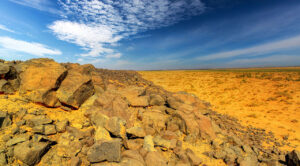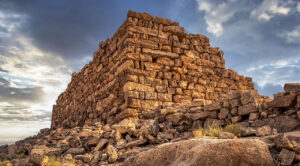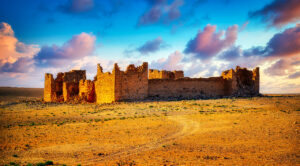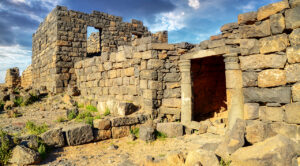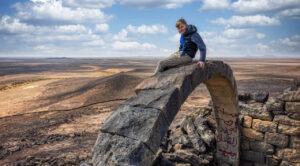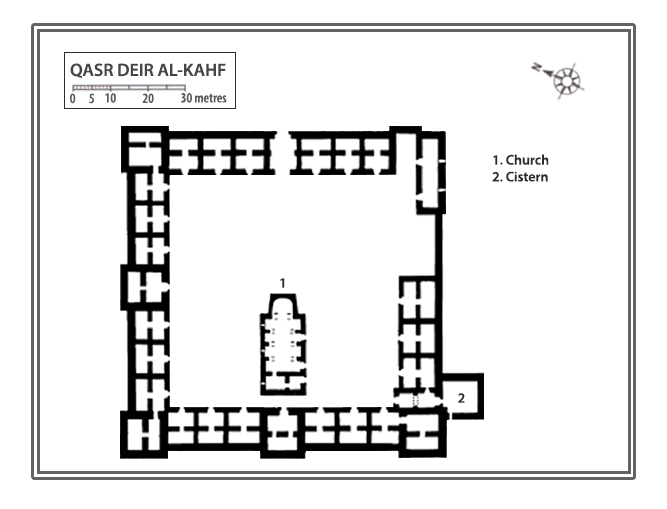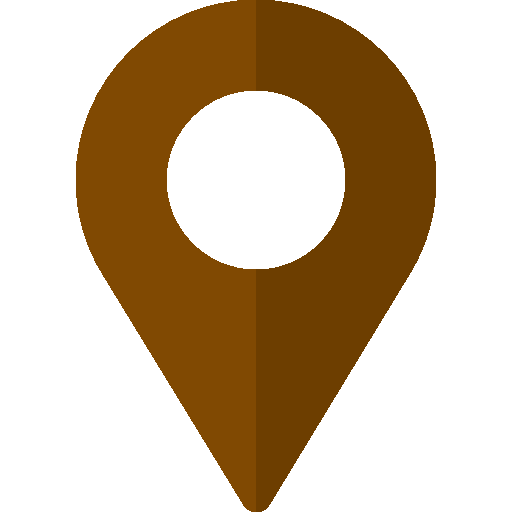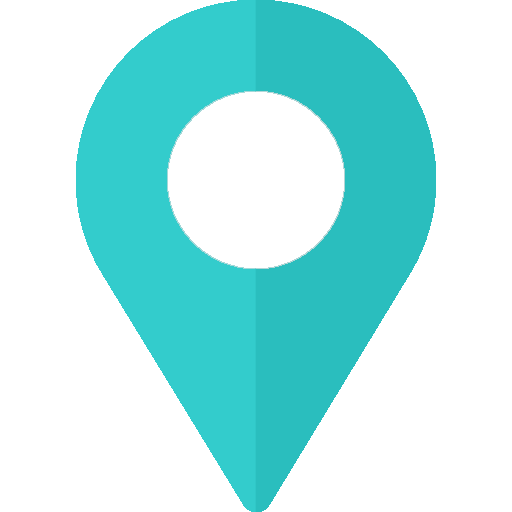The majestic basalt fortress of Deir Al-Kahf stands as a testament to Roman ingenuity, its dark stone walls rising prominently in the desolate landscape. Located to the north of the highway connecting Mafraq to the Iraqi border and about 45 kilometres from Qasr Azraq, this 4th-century stronghold played a vital role as a sentry post on the historic Strata Diocletiana, the ancient trade and military route between Azraq and Bostra.

Constructed entirely from black basalt, Deir Al-Kahf shares a visual kinship with the renowned ruins of Umm al-Jimal. However, its remains are more modest in scale, offering visitors a compact yet fascinating glimpse into Roman military architecture. The rectangular fort, measuring approximately 60 metres per side, features robust walls with a thickness of 1.5 metres (5 feet) that still soar up to 7.5 metres (25 feet) in certain parts. Corner towers, along with two intermediate towers on the northern and western walls, once fortified this strategic outpost, enhancing its defensive capabilities.
Originally, the main entrance was located on the eastern side, where remnants of a colossal basalt gate still lie embedded in the ground. Today, however, visitors access the site through a later addition to the western wall. Once inside, the courtyard reveals traces of a church added in a subsequent phase of the fort’s history. The gentle curve of the church’s apse and the nearby plastered cistern hint at evolving architectural and functional purposes over time.
Encircling the courtyard, one can imagine the two-storey barracks that once contained about 100 rooms, with towers boasting an extra level. Together, these accommodations could house a sizeable garrison of at least 500 soldiers. A blocked postern in the southern wall once provided access to a covered cistern, essential for storing water in this arid region. Interestingly, a Greek inscription above the lintel of this postern mentions a prefect named Agrippa, further attesting to its Roman provenance. Multiple cisterns and pools scattered throughout the surrounding area would have helped sustain the fort and its occupants.
Deir Al-Kahf’s historical narrative takes a mysterious turn as it appears to have been abandoned in the late 5th century for reasons still unknown. The silence of its weathered stones and the barren surroundings evoke a sense of wonder about the lives that once thrived here and the circumstances that led to its desertion.
Today, Deir Al-Kahf remains tucked away from conventional tourist paths, offering a tranquil and rewarding escape for intrepid explorers. Venture off the beaten track, and for a modest fee, you can hire a local guide to uncover the fort’s history, secrets and hidden corners. This lesser-known gem invites imagination and reflection, a must-visit for those with a passion for history and an appreciation for the enduring legacy of ancient craftsmanship.
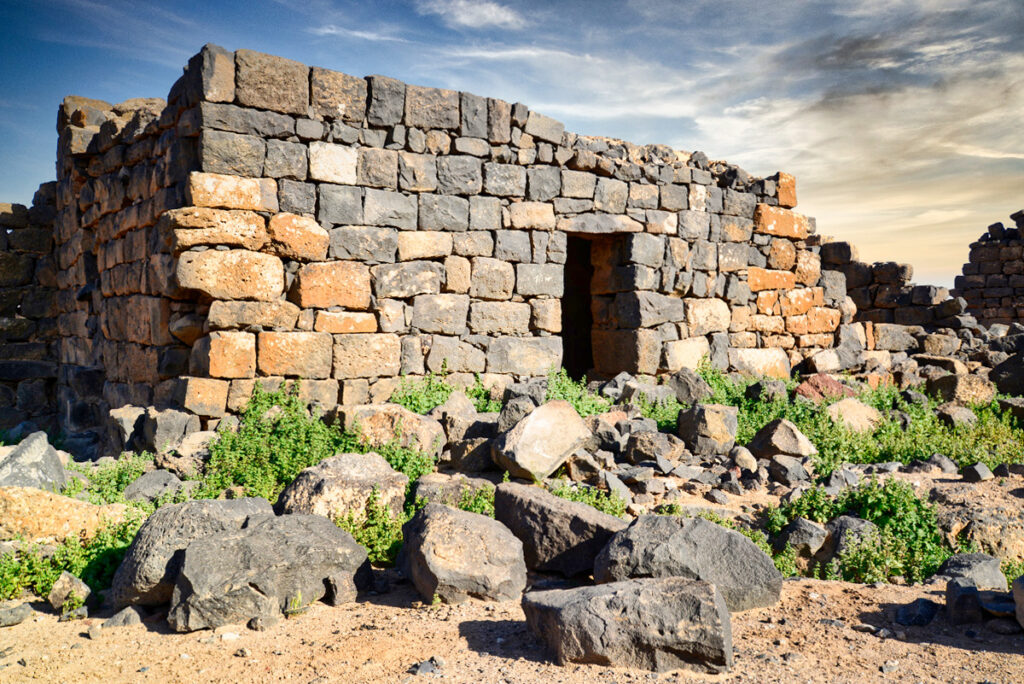
Deir Al-Kahf, located in northeastern Jordan, is an ancient archaeological site that holds significant historical and cultural value. Dating back to the Nabataean and Roman periods, this site served as a key settlement and a waypoint for travellers and caravans navigating the arid landscape of the region. Its strategic location along ancient trade routes underscores its importance in connecting various cultures and economies.
The name “Deir Al-Kahf” translates to “Monastery of the Cave,” hinting at its use as a spiritual retreat or sanctuary in later periods. Key features of the site include rock-carved structures, remnants of fortifications, and inscriptions that reflect the complex mix of influences from Nabataean, Roman, and Byzantine civilisations. These architectural elements highlight the ingenuity of ancient engineering techniques adapted to Jordan’s challenging desert environment.
Historically, Deir Al-Kahf played a vital role in protecting trade routes and maintaining regional stability. Its fortified nature suggests its use during times of conflict, while its later Christian adaptation hints at its spiritual significance.
Today, Deir Al-Kahf serves as a testament to Jordan’s rich heritage, representing layers of history that showcase the interplay between commerce, religion, and culture in the ancient Near East. It remains a site of intrigue for historians and archaeologists alike.
